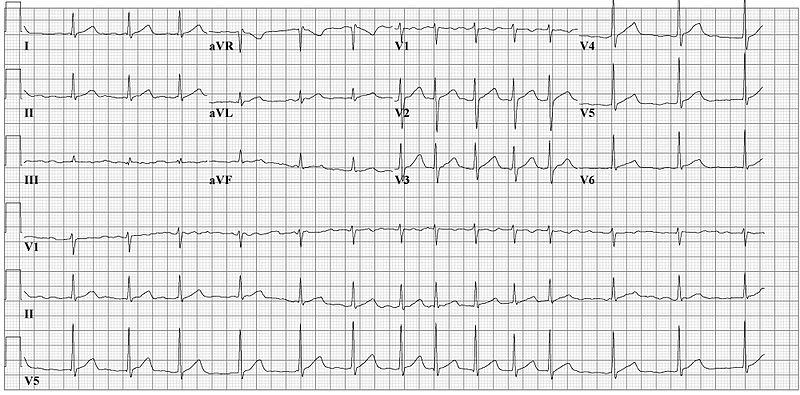
“Varenicline, an α2β2 Nicotinic Acetylcholine Receptor Partial Agonist, vs Sustained-Release Bupropion and Placebo for Smoking Cessation”
JAMA. 2006 Jul 5;296(1):56-63. [free full text]
—
Assisting our patients in smoking cessation is a fundamental aspect of outpatient internal medicine. At the time of this trial, the only approved pharmacotherapies for smoking cessation were nicotine replacement therapy and bupropion. As the α2β2 nicotinic acetylcholine receptor (nAChR) was thought to be crucial to the reinforcing effects of nicotine, it was hypothesized that a partial agonist for this receptor could yield sufficient effect to satiate cravings and minimize withdrawal symptoms but also limit the reinforcing effects of exogenous nicotine. Thus Pfizer designed this large phase 3 trial to test the efficacy of its new α2β2 nAChR partial agonist varenicline (Chantix) against the only other non-nicotine pharmacotherapy at the time (bupropion) as well as placebo.
The trial enrolled adult smokers (10+ cigarettes per day) with fewer than three months of smoking abstinence in the past year (notable exclusion criteria included numerous psychiatric and substance use comorbidities). Patients were randomized to 12 weeks of treatment with either varenicline uptitrated by day 8 to 1mg BID, bupropion SR uptitrated by day 4 to 150mg BID, or placebo BID. Patients were also given a smoking cessation self-help booklet at the index visit and encouraged to set a quit date of day 8. Patients were followed at weekly clinic visits for the first 12 weeks (treatment duration) and then a mixture of clinic and phone visits for weeks 13-52. Non-smoking status during follow-up was determined by patient self-report combined with exhaled carbon monoxide < 10ppm. The primary endpoint was the 4-week continuous abstinence rate for study weeks 9-12 (as confirmed by exhaled CO level). Secondary endpoints included the continuous abstinence rate for weeks 9-24 and for weeks 9-52.
1025 patients were randomized. Compliance was similar among the three groups and the median duration of treatment was 84 days. Loss to follow-up was similar among the three groups. CO-confirmed continuous abstinence during weeks 9-12 was 44.0% among the varenicline group vs. 17.7% among the placebo group (OR 3.85, 95% CI 2.70–5.50, p < 0.001) vs. 29.5% among the bupropion group (OR vs. varenicline group 1.93, 95% CI 1.40–2.68, p < 0.001). (OR for bupropion vs. placebo was 2.00, 95% CI 1.38–2.89, p < 0.001.) Continuous abstinence for weeks 9-24 was 29.5% among the varenicline group vs. 10.5% among the placebo group (p < 0.001) vs. 20.7% among the bupropion group (p = 0.007). Continuous abstinence rates weeks 9-52 were 21.9% among the varenicline group vs. 8.4% among placebo group (p < 0.001) vs. 16.1% among the bupropion group (p = 0.057). Subgroup analysis of the primary outcome by sex did not yield significant differences in drug efficacy by sex.
This study demonstrated that varenicline was superior to both placebo and bupropion in facilitating smoking cessation at up to 24 weeks. At greater than 24 weeks, varenicline remained superior to placebo but was similarly efficacious as bupropion. This was a well-designed and executed large, double-blind, placebo- and active-treatment-controlled multicenter US trial. The trial was completed in April 2005 and a new drug application for varenicline (Chantix) was submitted to the FDA in November 2005. Of note, an “identically designed” (per this study’s authors), manufacturer-sponsored phase 3 trial was performed in parallel and reported very similar results in the in the same July 2006 issue of JAMA (PMID: 16820547) as the above study by Gonzales et al. These robust, positive-outcome pre-approval trials of varenicline helped the drug rapidly obtain approval in May 2006.
Per expert opinion at UpToDate, varenicline remains a preferred first-line pharmacotherapy for smoking cessation. Bupropion is a suitable, though generally less efficacious, alternative, particularly when the patient has comorbid depression. Per UpToDate, the recent (2016) EAGLES trial demonstrated that “in contrast to earlier concerns, varenicline and bupropion have no higher risk of associated adverse psychiatric effects than [nicotine replacement therapy] in smokers with comorbid psychiatric disorders.”
Further Reading/References:
1. This trial @ ClinicalTrials.gov
2. Sister trial: “Efficacy of varenicline, an alpha4beta2 nicotinic acetylcholine receptor partial agonist, vs placebo or sustained-release bupropion for smoking cessation: a randomized controlled trial.” JAMA. 2006 Jul 5;296(1):56-63.
3. Chantix FDA Approval Letter 5/10/2006
4. Rigotti NA. Pharmacotherapy for smoking cessation in adults. Post TW, ed. UpToDate. Waltham, MA: UpToDate Inc.
5. “Neuropsychiatric safety and efficacy of varenicline, bupropion, and nicotine patch in smokers with and without psychiatric disorders (EAGLES): a double-blind, randomised, placebo-controlled clinical trial.” Lancet. 2016 Jun 18;387(10037):2507-20.
6. 2 Minute Medicine: “Varenicline and bupropion more effective than varenicline alone for tobacco abstinence”
7. 2 Minute Medicine: “Varenicline safe for smoking cessation in patients with stable major depressive disorder”
Summary by Duncan F. Moore, MD
Image Credit: Сергей Фатеев, CC BY-SA 3.0, via Wikimedia Commons






